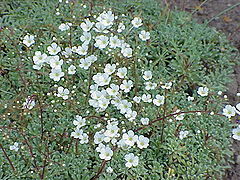Saxifraga cochlearis: Difference between revisions
New page: __NOTOC__{{Plantbox | name = ''LATINNAME'' <!--- replace LATINNAME with the actual latin name --> | common_names = <!--- if multiple, list all, if none, leave blank --> | growth_habi... |
No edit summary |
||
| (One intermediate revision by one other user not shown) | |||
| Line 1: | Line 1: | ||
{{SPlantbox | |||
| | |familia=Saxifragaceae | ||
| | |genus=Saxifraga | ||
| | |species=cochlearis | ||
| | |common_name=Snail saxifrage | ||
| | |name_ref=Flora - A Gardener's Encyclopedia | ||
| | |habit=herbaceous | ||
| | |habit_ref=Flora - A Gardener's Encyclopedia | ||
| | |Max ht box=8 | ||
| | |Max ht metric=in | ||
| | |height_ref=Flora - A Gardener's Encyclopedia | ||
| | |Max wd box=6 | ||
| | |Max wd metric=in | ||
| | |width_ref=Flora - A Gardener's Encyclopedia | ||
| | |exposure=sun | ||
| | |sun_ref=Flora - A Gardener's Encyclopedia | ||
| | |features=flowers | ||
| | |flowers=white | ||
| | |Temp Metric=°F | ||
| | |min_zone=7 | ||
| | |usda_ref=Flora - A Gardener's Encyclopedia | ||
| | |max_zone=8 | ||
| | |image=Saxifraga cochlearis1.jpg | ||
| | |image_width=240 | ||
}} | }} | ||
Describe plant here... | |||
{{Inc| | {{Inc| | ||
Saxifraga cochlearis, Reichb. (S. lingulata var. cochlearis, Engl.). Six to 9 in. high, densely cespitose, with short much-branched caudicles covered below with withered lvs.: lvs. densely rosulate, spreading, 1/2-1 in. long, linear at their base, toward the top spreading into a rounded or spatulate blade, glaucous, coriaceous, margin cartilaginous and crustate with lime; the cauline lvs. small, linear, acute, red-brown: infl. paniculate, erect and open, either thyrsoid or subcorymbose, borne on very slender bright red-brown fl.-sts.: fls. white, 1/2 - 3/4 in. diam.; calyx red-brown, the lobes small, ovate, obtuse; petals obovate, apex rounded. June, July. Maritime Alps. Eu. | |||
Saxifraga cochlearis, Reichb. (S. lingulata var. cochlearis, Engl.). Six to 9 in. high, densely cespitose, with short much-branched caudicles covered below with withered lvs.: lvs. densely rosulate, spreading, 1/2-1 in. long, linear at their base, toward the top spreading into a rounded or spatulate blade, glaucous, coriaceous, margin cartilaginous and crustate with lime; the cauline lvs. small, linear, acute, red-brown: infl. paniculate, erect and open, either thyrsoid or subcorymbose, borne on very slender bright red-brown fl.-sts.: fls. white, 1/2 - 3/4 in. diam.; calyx red-brown, the lobes small, ovate, obtuse; petals obovate, apex rounded. June, July. Maritime Alps. Eu. | |||
Var. major, Hort., has much larger rosettes of lvs. and taller sprays of fls. It is suggested that it may be of hybrid origin. Var. minor, Hort. (S. Probynii, Correv.), has minute rosettes of silvery lvs. and much shorter sprays of fls. which are white.—Apparently some of the material grown as S. valdensis is referable to this. | |||
{{SCH}} | {{SCH}} | ||
}} | }} | ||
==Cultivation== | ==Cultivation== | ||
===Propagation=== | ===Propagation=== | ||
===Pests and diseases=== | ===Pests and diseases=== | ||
== | |||
==Varieties== | |||
==Gallery== | ==Gallery== | ||
<gallery perrow=5> | |||
File:Saxifraga cochlearis0.jpg | |||
Image:Upload.png| photo 2 | Image:Upload.png| photo 2 | ||
Image:Upload.png| photo 3 | Image:Upload.png| photo 3 | ||
| Line 57: | Line 53: | ||
==References== | ==References== | ||
<references/> | |||
*[[Standard Cyclopedia of Horticulture]], by L. H. Bailey, MacMillan Co., 1963 | *[[Standard Cyclopedia of Horticulture]], by L. H. Bailey, MacMillan Co., 1963 | ||
<!--- xxxxx *Flora: The Gardener's Bible, by Sean Hogan. Global Book Publishing, 2003. ISBN 0881925381 --> | <!--- xxxxx *Flora: The Gardener's Bible, by Sean Hogan. Global Book Publishing, 2003. ISBN 0881925381 --> | ||
| Line 66: | Line 63: | ||
{{stub}} | {{stub}} | ||
__NOTOC__ | |||
Latest revision as of 18:42, 19 May 2010
| Saxifraga cochlearis subsp. var. | Snail saxifrage | |||||||||||||||||||||||||||||||||||||||||||||||||||||||
|---|---|---|---|---|---|---|---|---|---|---|---|---|---|---|---|---|---|---|---|---|---|---|---|---|---|---|---|---|---|---|---|---|---|---|---|---|---|---|---|---|---|---|---|---|---|---|---|---|---|---|---|---|---|---|---|---|

|
|
| ||||||||||||||||||||||||||||||||||||||||||||||||||||||
| ||||||||||||||||||||||||||||||||||||||||||||||||||||||||
Describe plant here...
| Standard Cyclopedia of Horticulture |
|---|
|
Saxifraga cochlearis, Reichb. (S. lingulata var. cochlearis, Engl.). Six to 9 in. high, densely cespitose, with short much-branched caudicles covered below with withered lvs.: lvs. densely rosulate, spreading, 1/2-1 in. long, linear at their base, toward the top spreading into a rounded or spatulate blade, glaucous, coriaceous, margin cartilaginous and crustate with lime; the cauline lvs. small, linear, acute, red-brown: infl. paniculate, erect and open, either thyrsoid or subcorymbose, borne on very slender bright red-brown fl.-sts.: fls. white, 1/2 - 3/4 in. diam.; calyx red-brown, the lobes small, ovate, obtuse; petals obovate, apex rounded. June, July. Maritime Alps. Eu. Var. major, Hort., has much larger rosettes of lvs. and taller sprays of fls. It is suggested that it may be of hybrid origin. Var. minor, Hort. (S. Probynii, Correv.), has minute rosettes of silvery lvs. and much shorter sprays of fls. which are white.—Apparently some of the material grown as S. valdensis is referable to this. CH
|
Cultivation
Propagation
Pests and diseases
Varieties
Gallery
-
photo 2
-
photo 3
References
- Standard Cyclopedia of Horticulture, by L. H. Bailey, MacMillan Co., 1963
External links
- w:Saxifraga cochlearis. Some of the material on this page may be from Wikipedia, under the Creative Commons license.
- Saxifraga cochlearis QR Code (Size 50, 100, 200, 500)

